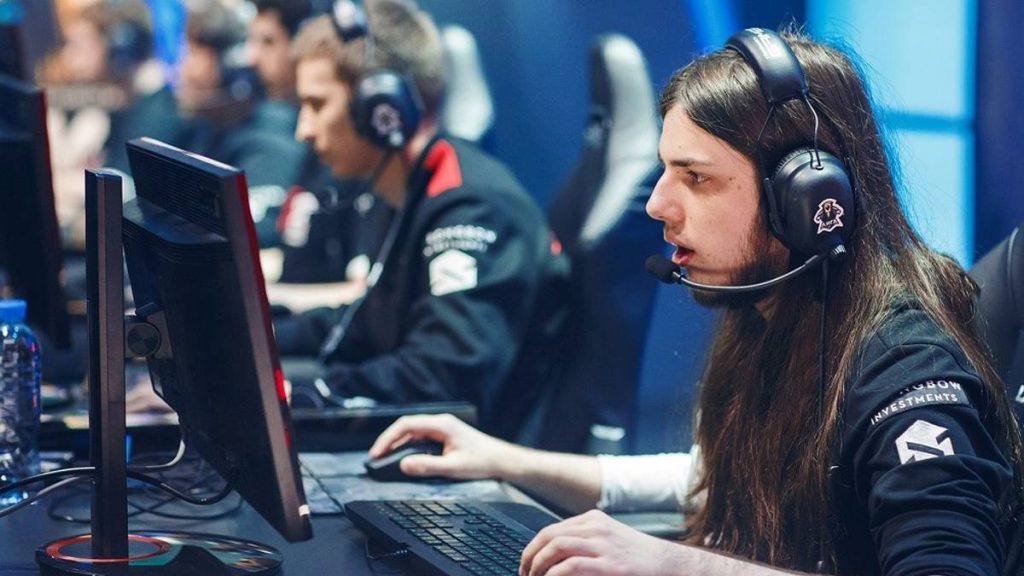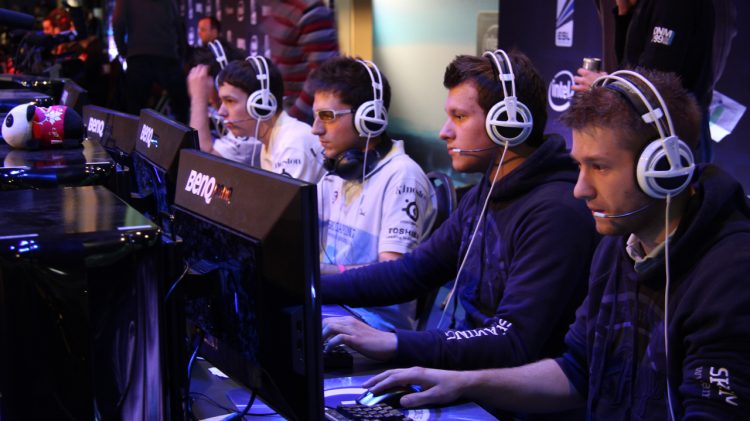The world of esports has experienced unprecedented growth over the past two decades, transforming from a niche hobby to a billion-dollar global industry. Competitions featuring video games like League of Legends, Dota 2, and Fortnite now draw millions of viewers, with prize pools often exceeding tens of millions of dollars. Esports players, many of whom are in their teens or early twenties, can become international celebrities, gaining fame and fortune at a remarkably young age.
However, this meteoric rise has been shadowed by a deeply troubling phenomenon: the premature deaths of esports athletes. From heart attacks to severe strokes, the alarming number of fatalities among young players has raised serious concerns about the mental and physical toll that professional gaming can take on the body. These deaths have prompted growing calls from experts in sports medicine, psychology, and health advocacy to rethink how esports athletes are managed and whether it is time to implement certain health and age-based regulations to protect their well-being.
In light of the increasing frequency of tragic incidents, there has been a growing consensus among professionals that esports should be treated with the same level of care and scrutiny as traditional sports when it comes to the health of its players. Specifically, the Physiological Age Requirement — a proposed rule that would set a minimum age for players based not just on calendar age but also on their physical and mental maturity — is emerging as a potential solution. But should such a measure be enforced in competitive gaming? Could it help mitigate the risks of stress, overwork, and physical strain that seem to be plaguing the industry? Or would it risk stifling the growth and diversity that esports offers?
This article explores the complex issue of esports player health, the frequent fatalities among young athletes, and the call for a physiological age threshold to help safeguard players’ health. We will look at the science behind these deaths, the demands of the esports industry, and the potential benefits and drawbacks of setting a health-focused age entry standard for esports.
1. The Growing Trend of Esports and Its Risks
Esports has rapidly become one of the most lucrative forms of entertainment in the world. With its massive online following, sponsorship deals from top brands, and widespread media coverage, esports now rivals traditional sports in terms of viewership and earnings. Games like League of Legends, Counter-Strike: Global Offensive, and Overwatch have millions of active players, and professional esports teams regularly compete in high-stakes tournaments.
At the heart of esports are players who, in their pursuit of excellence, spend countless hours training, perfecting their in-game skills, and preparing for competitions. Unlike traditional sports, however, esports requires much less physical movement, which leads many to underestimate the potential physical strain involved.
While the physical toll of esports is not as visible as it is in high-contact sports like football or basketball, players are not exempt from the intense demands of their profession. High levels of mental strain, stress, sleep deprivation, sedentary behavior, and poor nutrition are common in the esports world, and all of these factors can have serious long-term consequences on physical health. For some, these pressures have culminated in sudden, tragic events.
In recent years, several esports athletes have collapsed or tragically died during or after intense gaming sessions. These incidents have exposed a grim reality: the pressures of professional esports may be contributing to cardiovascular issues, brain health problems, and mental fatigue among athletes. In some cases, heart attacks, stroke-like symptoms, and even suicide have been associated with the extreme stress and lack of regulation around the physical health of these players.
2. The Deaths of Esports Athletes: A Growing Crisis
In 2021 alone, several esports athletes died prematurely, triggering an outcry in the esports community. Some high-profile cases include:
- Kurtis “Kurt0411” Hennig, an Australian esports player, tragically passed away at just 22 years old. While the exact cause of death was not publicly disclosed, his sudden death left the esports community reeling. Speculation about his lifestyle and the pressures of competitive gaming quickly surfaced.
- Ammar “Amo” Bakir, a 21-year-old Dota 2 player from Jordan, passed away after suffering a heart attack, which was believed to be linked to the immense mental and physical stress he had been enduring in the lead-up to major competitions.
- The tragic death of Wang “WeiXiao” Hao, a former League of Legends star, who collapsed during a high-stakes competition and later died, further underscored the dangers that esports athletes face.
These events, though perhaps isolated in number, are indicative of a broader issue: the lack of physical wellness protocols and the mental strain placed on young athletes, many of whom are still in their late teens or early twenties.
The intensity of training regimens, the long hours spent in front of screens, and the psychological pressure to perform at the highest level all contribute to an environment where the physical health of the players can deteriorate rapidly. Mental health disorders like anxiety, depression, and burnout are also rampant within the esports community, exacerbating the risks of physical collapse.
3. The Case for a Physiological Age Requirement
Given the increasing number of premature deaths and health crises in esports, many experts are now calling for health regulations that would help protect players, particularly those who are very young and still developing physically and mentally.
One proposed solution is the establishment of a “Physiological Age Requirement”. This would mean that, in addition to a player’s chronological age, a player would have to meet certain health and fitness standards to be eligible to compete in high-level esports tournaments. This would act as a safeguard to ensure that young athletes are physically mature enough to handle the demands of professional gaming, much like traditional sports require athletes to be of a certain age before entering elite levels.
Experts in sports medicine argue that players in their late teens may not yet have fully developed the musculoskeletal system, cardiovascular health, and mental resilience required to withstand the rigors of professional gaming. The strain of sitting for long periods, the psychological pressure, and the demands of competition can exacerbate cardiac stress and mental health issues in younger players. Setting a physiological age standard could help mitigate these risks.
In some ways, this idea mirrors the existing protocols in traditional sports. For example, in football or basketball, players need to be of a certain size, strength, and endurance before they can compete at the highest level. Similarly, a physiological age standard for esports would be a way to ensure that players are mentally and physically prepared for the demands of the sport.

4. Why Esports Needs a Physiological Health Standard
Here are several reasons why establishing a health and fitness standard, including a physiological age requirement, could be vital for the future of esports:
a) Mental and Physical Toll of Competitive Gaming
The mental health of professional gamers is often overlooked. Studies have shown that players experience high rates of stress, anxiety, and depression due to the pressures of competition and the fear of failure. In addition, the physical demands of gaming, such as repetitive strain injuries, poor posture, and eye strain, can have long-term effects on the body.
A physiological age requirement would not only assess physical readiness but could also ensure that players are psychologically mature enough to handle the intense scrutiny and pressure that comes with high-level competition.
b) Early Deaths Are a Wake-Up Call
The tragic deaths of esports players underscore the urgent need for reform. The lack of proper health protocols and an industry-wide effort to monitor player well-being has led to the premature loss of promising young athletes. These deaths serve as a sobering reminder of the physical toll that esports can take, and a physiological age requirement could potentially save lives.
c) Protection for Players and the Industry
Implementing such regulations would ensure that players are protected, reducing the likelihood of serious injury or health problems. By ensuring that players meet a baseline level of physical fitness before entering professional competition, esports organizations can foster a healthier, more sustainable career path for their athletes.
d) Setting a Precedent for Ethical Standards
Esports is in a unique position to lead the charge in creating more ethical, health-conscious standards for competitive gaming. By setting a physiological age requirement, the esports industry can prioritize athlete health alongside the excitement of competition, fostering a positive image for the sport.
5. Challenges and Potential Drawbacks
While the idea of a physiological age requirement is well-intentioned, it is not without its challenges:
a) Defining Physiological Maturity
The most significant challenge is defining what constitutes “physiological readiness.” Maturity in physical terms can vary from person to person, and it is difficult to create a universal standard that applies to all athletes. Some players may be physically mature at 16, while others may not reach full maturity until their mid-20s.
b) Risk of Exclusion
One concern is the potential for the new standards to exclude young prodigies who demonstrate exceptional skill at a very young age. Players like Faker (Lee Sang-hyeok) or ZywOo (Mathieu Herbaut) became esports legends at a very young age, and imposing age
limits could stifle the development of exceptional talent.
c) Balancing Health and Performance
Finally, there is the challenge of finding the right balance between athletic health and the inherent nature of esports, which places a premium on reflexes, mental agility, and strategic thinking. Ensuring the health of players without dampening the competitive spirit and fluidity of the esports world will be a delicate balancing act.
6. Conclusion: A Healthier Future for Esports
The tragic deaths of young esports athletes have prompted the industry to reflect on the pressures placed on its players, and whether the current system is sustainable. While competitive gaming remains a thrilling spectacle for millions around the world, it is clear that the well-being of the athletes who make it possible must take precedence.
Implementing a physiological age requirement could be a proactive step in ensuring that young players are ready for the mental and physical challenges of high-level competition. It could help foster a healthier esports ecosystem, where athletes can pursue long, successful careers without compromising their health.
At the same time, the esports industry must continue to strike a delicate balance between youth talent development and health and wellness, ensuring that both the athletes and the sport itself can flourish for years to come.


































Discussion about this post